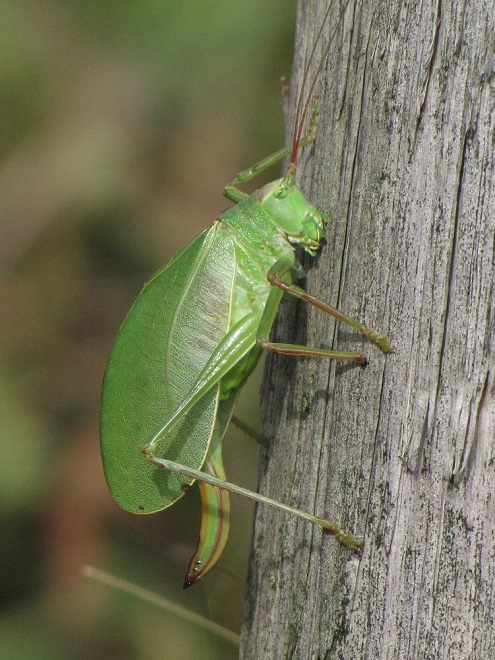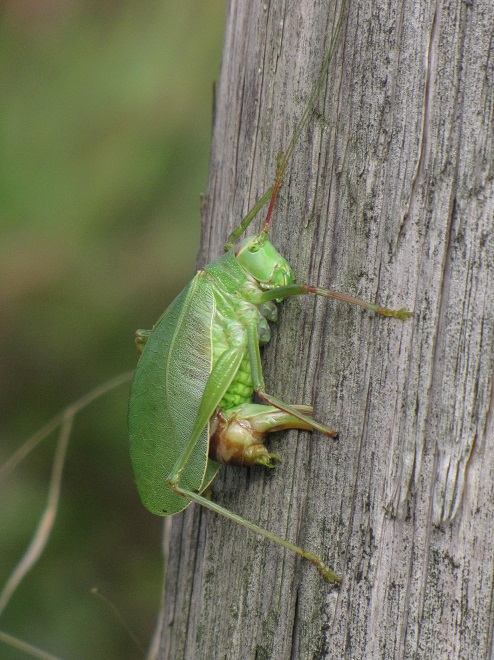They look amazingly similar to the green leaves on a deciduous tree. During the late summer and autumn, they spend their time as adults in the cover of the forest canopy. They prefer to run and hop rather than fly. But despite their discretion, you’re not likely to miss the Common True Katydid (Pterophylla camellifolia).

Take a listen and you may hear the male’s nocturnal calls filling the treetops of woodlands and shady neighborhoods throughout the lower Susquehanna valley right now. The loud, raspy “ka-ty-did, she-did, she-didn’t” is reliably answered by other nearby males as competition for willing females reaches a frenzy. In mature forests where populations are dense, this rowdy chorus can reach a remarkable volume.

The Common True Katydid’s song is like a soundtrack for the oft times melancholy mood of autumn. As the days shorten and a chill fills the air, the rate of the Common True Katydid’s call becomes slower and its tone deeper in response to the falling temperatures. Males continue forcing a sluggish call until freezing conditions finally bring about their demise. Another generation and another season gone.
